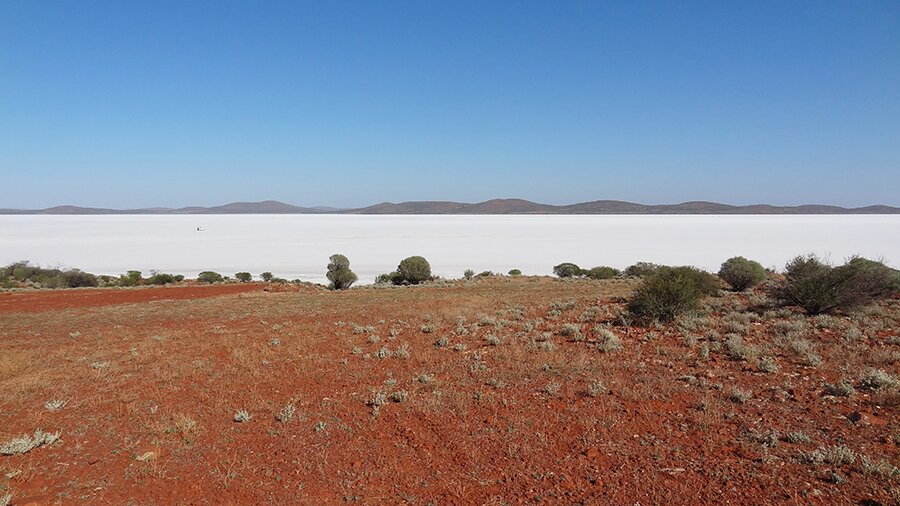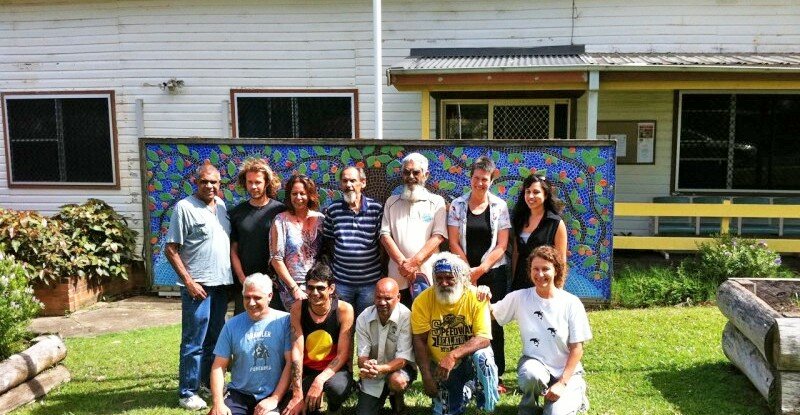Gary Williams is fighting to save languages that were spoken on the NSW North Coast for thousands of years.
By Paris Bosch
For most, language is something we take for granted. For Gary Williams and the Gumbaynggirr people however, maintaining their traditional language is a daily struggle.
As CEO of the Muurrbay Language Centre, Gary has worked with his colleagues over the past decades to revive their local Gumbaynggirr dialect, as well as many other threatened Aboriginal languages throughout NSW.
“Our aim at the Muurrbay Centre is to revive the Aboriginal language and get as many people involved in it as possible.”
Spread along the Pacific coast, Gumbaynggirr lands extend from the Nambucca River in the south to the Clarence River in the north and the Great Dividing Range in the west. There are three main dialects. All have been in decline since European settlement.
“With many of the older generations, the powers that be tried to stamp their language out, but it was still around here and there. And so while people all over were aware of the language, most went through life without being able to speak it or learn it because they grew up without it.”
Today, Gary and the volunteers at the Muurrbay Centre work with Aboriginal youth to ensure the current generation of Gumbaynggirr children have the opportunity to learn the language of their forefathers.
“We go up to schools, teach the language and just try to make it fun so the kids can keep the interest going. Our work is all about giving the younger ones a chance to get into the language and be proud of it.”
This struggle is not unique to the Gumbaynggirr people. Before European settlement it is estimated there were over 500 Aboriginal “nations” Australia-wide, speaking 250 languages in more than 600 dialects.
While a few key Aboriginal words continue to be widely used today, including terms like ‘kangaroo’, ‘koala’ and Australian slang such as ‘yakka’ and ‘yabber’, much of the language has been lost over generations.
Experts say just 60 of traditional languages continue to survive, with many of these in danger of vanishing as well.
Conscious there’s only a small window of opportunity to try to save what’s left, the Muurrbay Centre has been in contact with other indigenous groups across Australia, helping people reconnect with their cultural heritage.
“We’re part of one big conversation, a growing band within Australia that are aware of strong Aboriginal languages and know that they’re under pressure as well.”
Along the NSW coast, Muurrbay has helped with the publication of five dictionaries for the language groups that traditionally existed between the Queensland border and the Hawkesbury River.
This work has not been without challenges. Gary says it is increasingly difficult to coordinate with the vast number of people keen to re-connect with traditional languages and promote them.
With story telling such an important part of traditional Australian culture, Gary says the hard work is rewarding.
“We want for people to get the language and to pass it onto their young ones.
The language will never come back to what it was before in terms of how it was spoken, but we can try to come as close as we can.”

My Top 5 – Gary Williams
1. Nambucca Heads NSW
Gary says, “It’s got everything. It’s not too big, you can go very close to the tablelands and the rainforest is only about half an hour drive away.”
Home to the Gumbaynggirr people and only a short detour from the Pacific Highway, historic Nambucca Heads is filled with cultural diversity and scenery. While visiting, head up to the Captain Cook and Rotary lookouts for amazing views of the coastline, or stroll along the outdoor graffiti art gallery locally known as V-Wall. With the Gordon Park rainforest close by, and lots of opportunities for fishing, golfing, and relaxing on beaches.
2. Darwin NT, through Longridge, Cloncurry and Mount Isa (QLD):
Gary says, “While I recommend Darwin itself, it’s the drive up there that is truly special. If coming from the east, go through Longridge, Cloncurry and Mount Isa, or stop at any number of the lovely little towns along the way for a great experience.
Connect with your adventurous side by taking the time to drive up to Darwin and absorb the country scenery. With hundreds of towns, rest stops and roadside camping spots paving the way, the possibilities are truly endless. Once you hit the Northern Territory, stop off at Daly Waters and have a drink at its historic pub or check out Mataranka, which is famous for the book ‘We of the Never Never’, before heading up to Darwin itself and embracing all that the city has to offer.
3. Lake Gairdner and Salt Lakes Region SA
“Filled with great places to camp and just beautiful. If you go to the lake first thing in the morning then you can see the animal tracks left by emus, dingos and kangaroos from the night before, all right there on the shelves of the salt lake.”
Situated 550km north of Adelaide, Lake Gairdner is located in one of the most remote areas of Australia. If you’re a motor enthusiast, head over in March to witness the Dry Lakes Racers Australia annual event, where hundreds converge to compete across the flat, dry surface in vehicles ranging from vintage motorbikes to custom built tanks. For a humbler experience, visit at any other time of the year to enjoy the true tranquillity and breathtaking beauty of the Australian outback.
4. Coffs Harbour (NSW)
“There are lots of national parks around and a lot of nature. There’s also whale watching and of course, they have lovely oysters!”
Located in the unique position where the Great Dividing Range escarpment meets the east coast, this friendly beachside city is the perfect place to connect with nature. While visiting, engage with the culture of the Gumbaynggirr people by heading over to Muttonbird Island, a sacred Aboriginal site that offers opportunities for year round bird watching and whale watching between June and November. Stop by the Botanic Gardens or hike through the Bruxner Park Flora Reserve and surround yourself with natural Australian plant life. Alternatively, explore the Solitary Islands Marine Park, to swim, snorkel or scuba dive with over 550 reef fish species.
5. Bega Valley (NSW)
“A very nice area, close to the Princes Highway so you don’t have to go too far off course.”
Originally home to the Yuin-Monaro Aboriginal tribal group, the Bega Valley is an area of unique historical significance. Immerse yourself in Aboriginal culture by exploring the remote and wild landscape of Biamanga National Park, a sacred site for the Yuin People. Visit the Bega Valley Regional Art Gallery, which features significant works by Albert Nanatjira and Hilda Rix Nicholas or head over to the Bega Cheese Heritage Centre to sample some fine cheese and learn about the history of this celebrated Australian brand.
Link: Read more in Issue 8 of Time to Roam.






